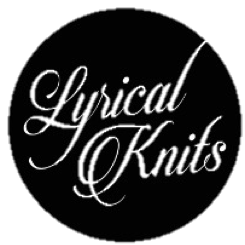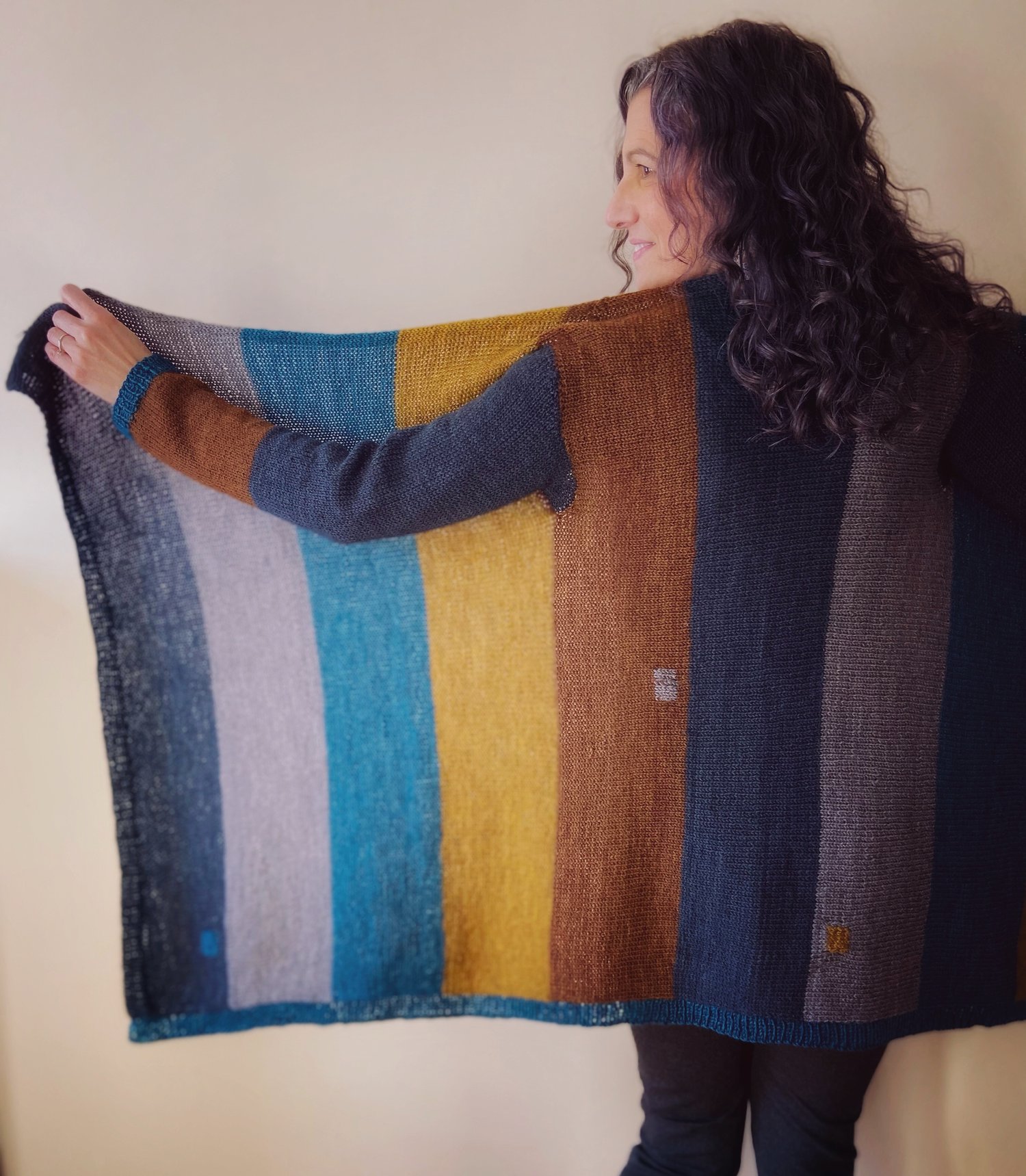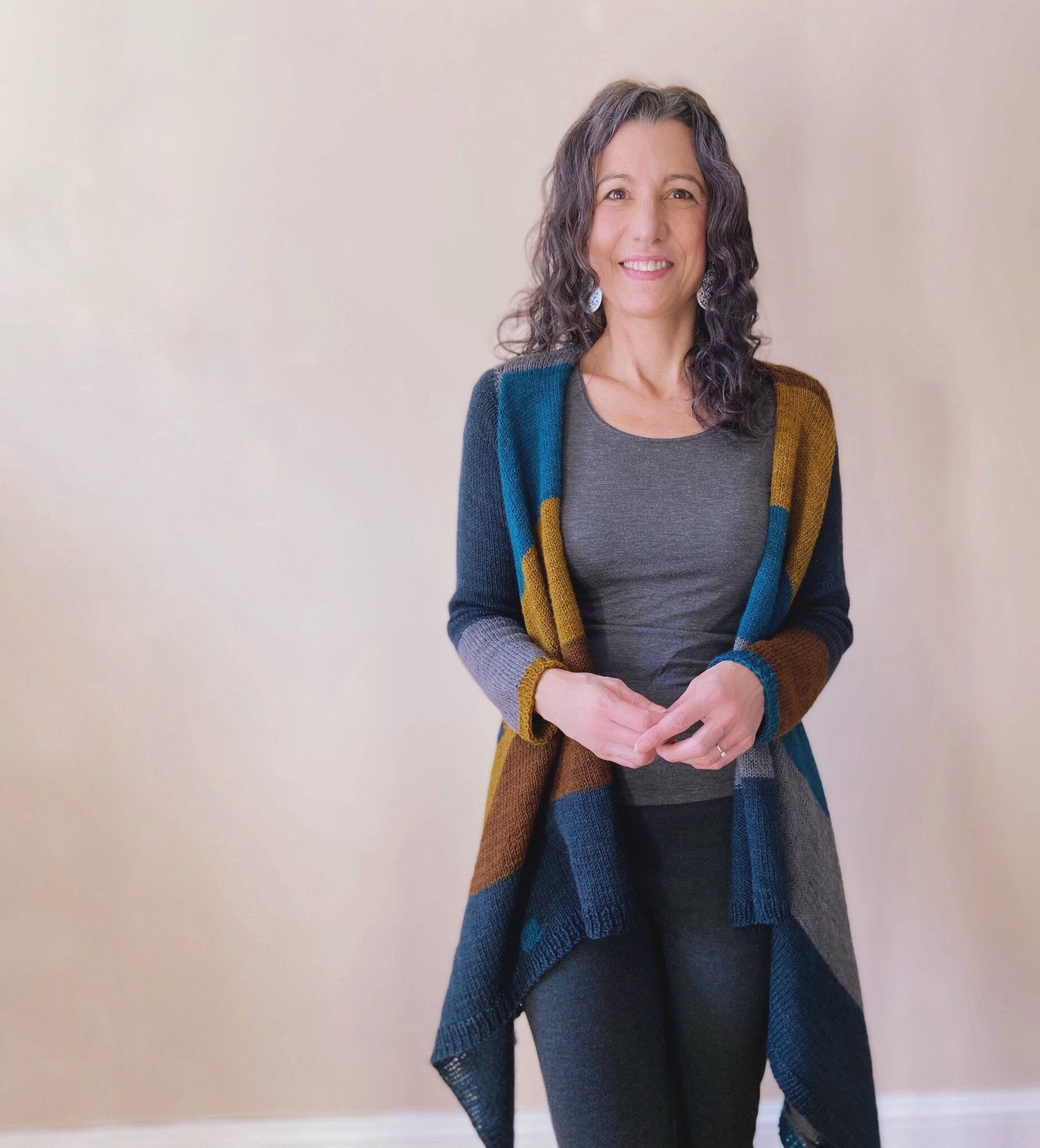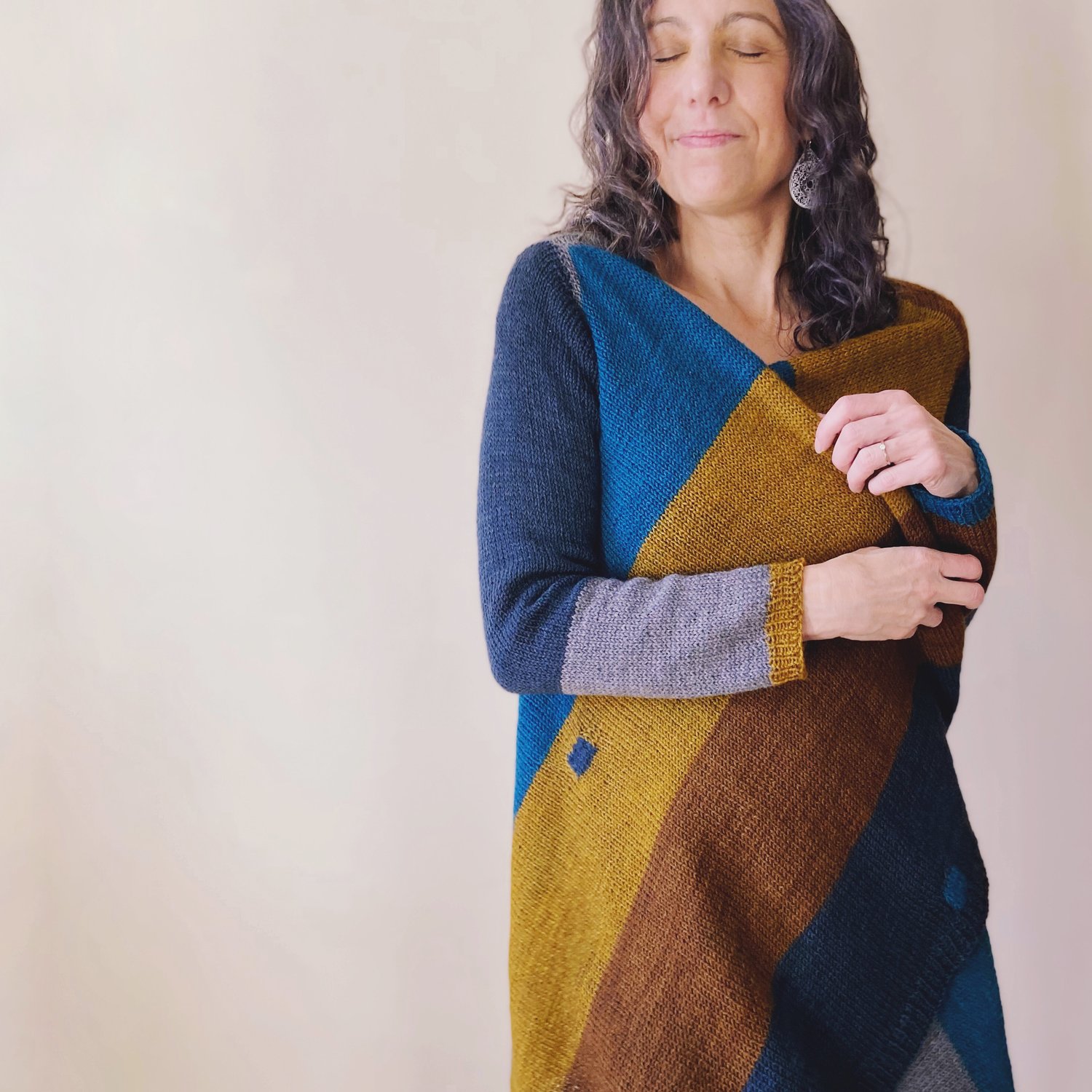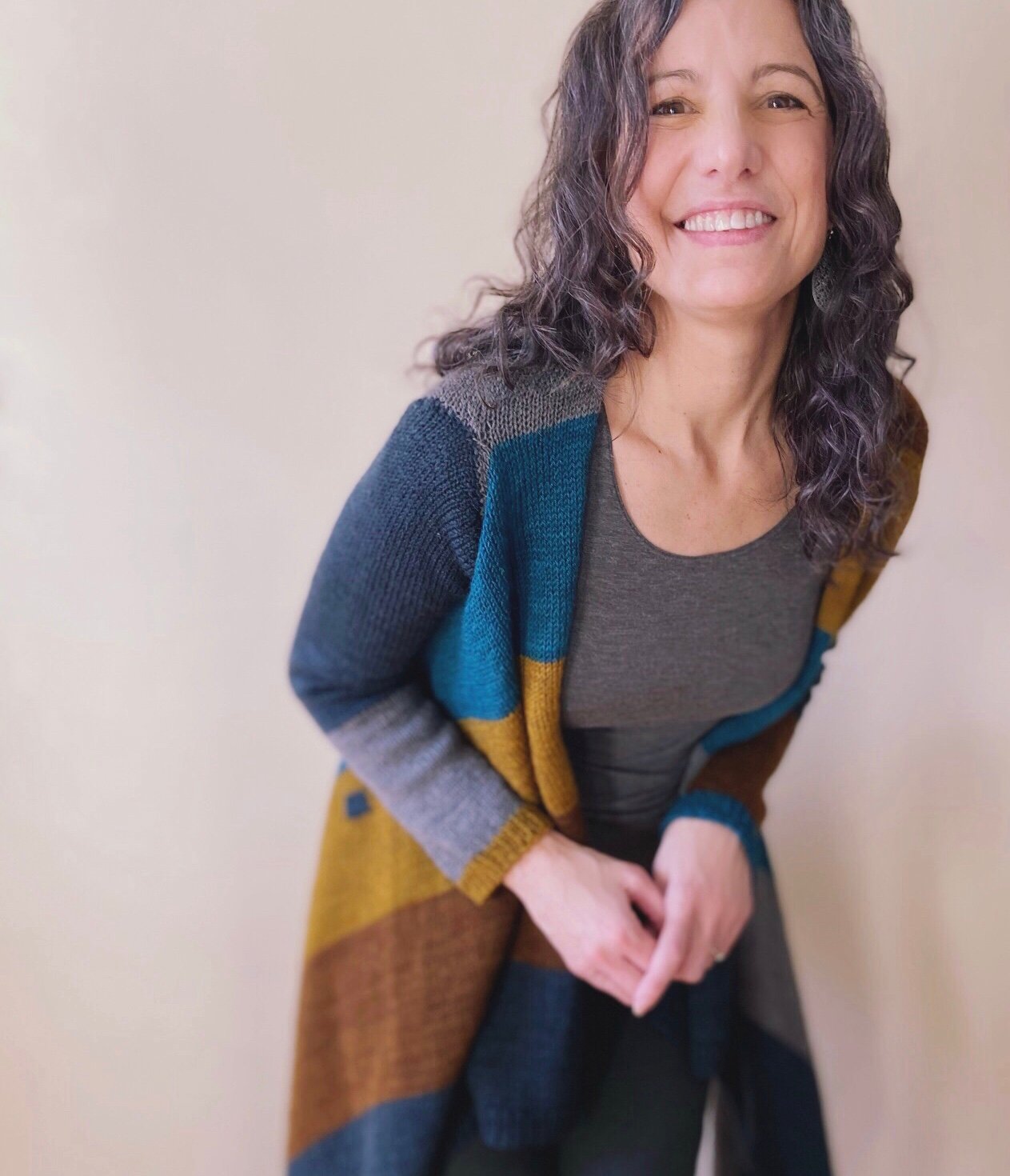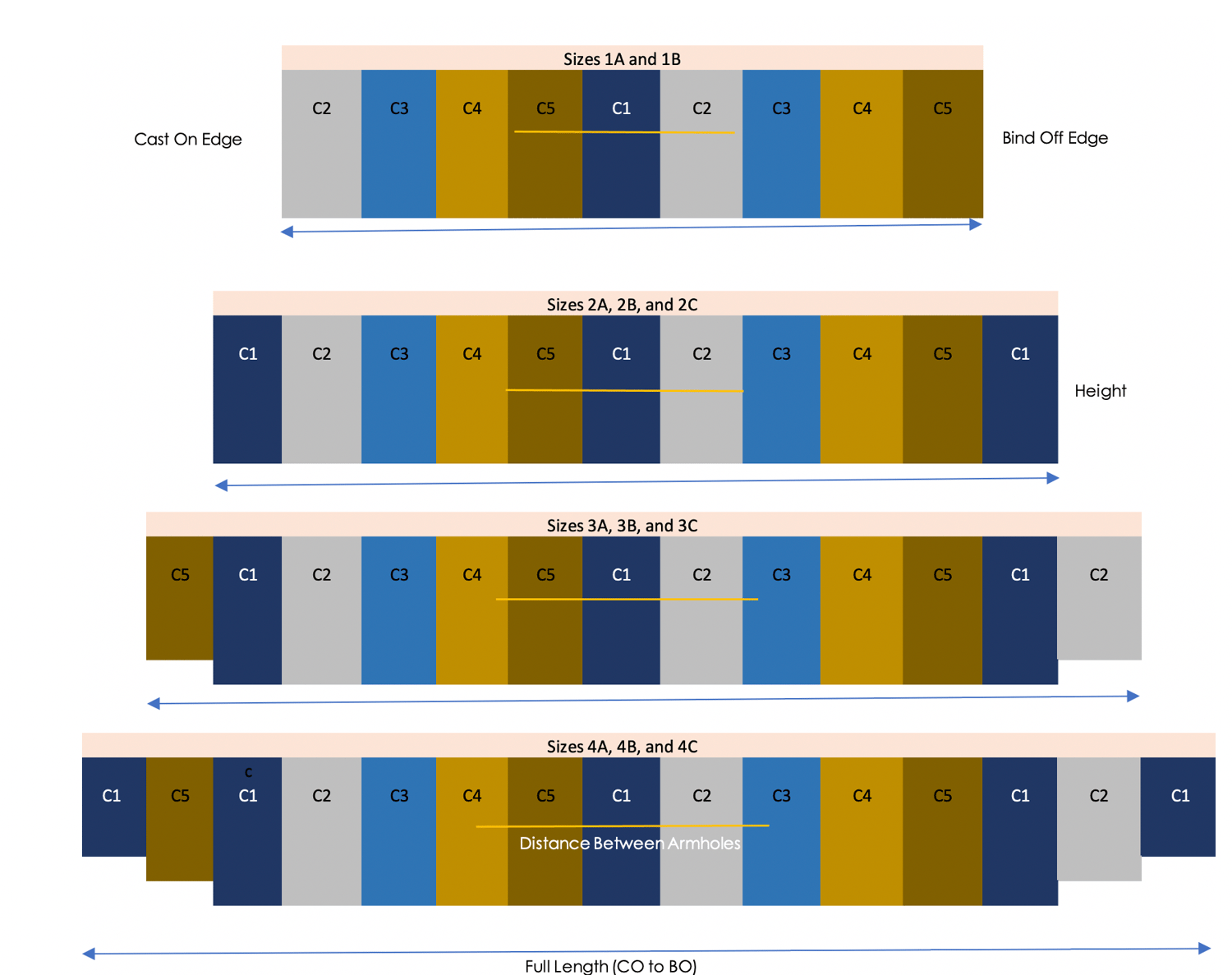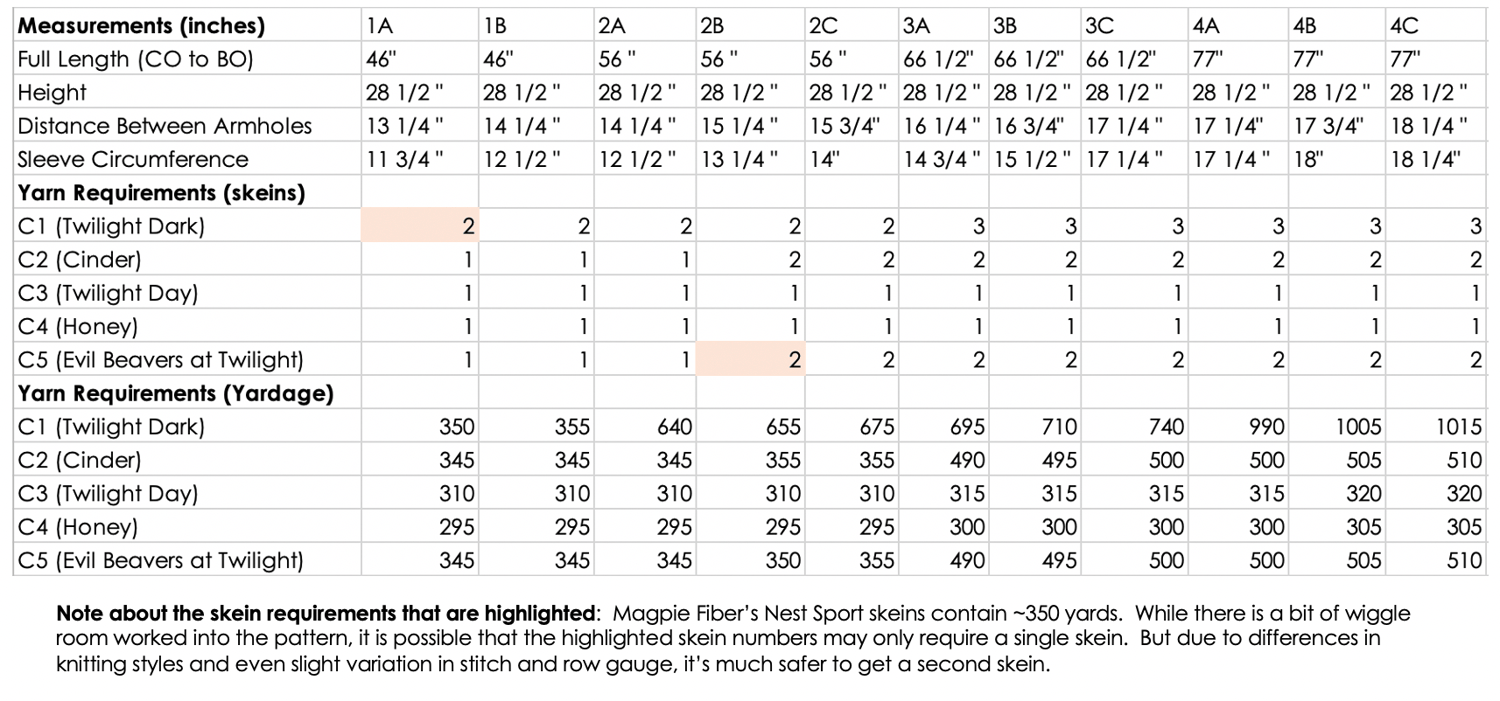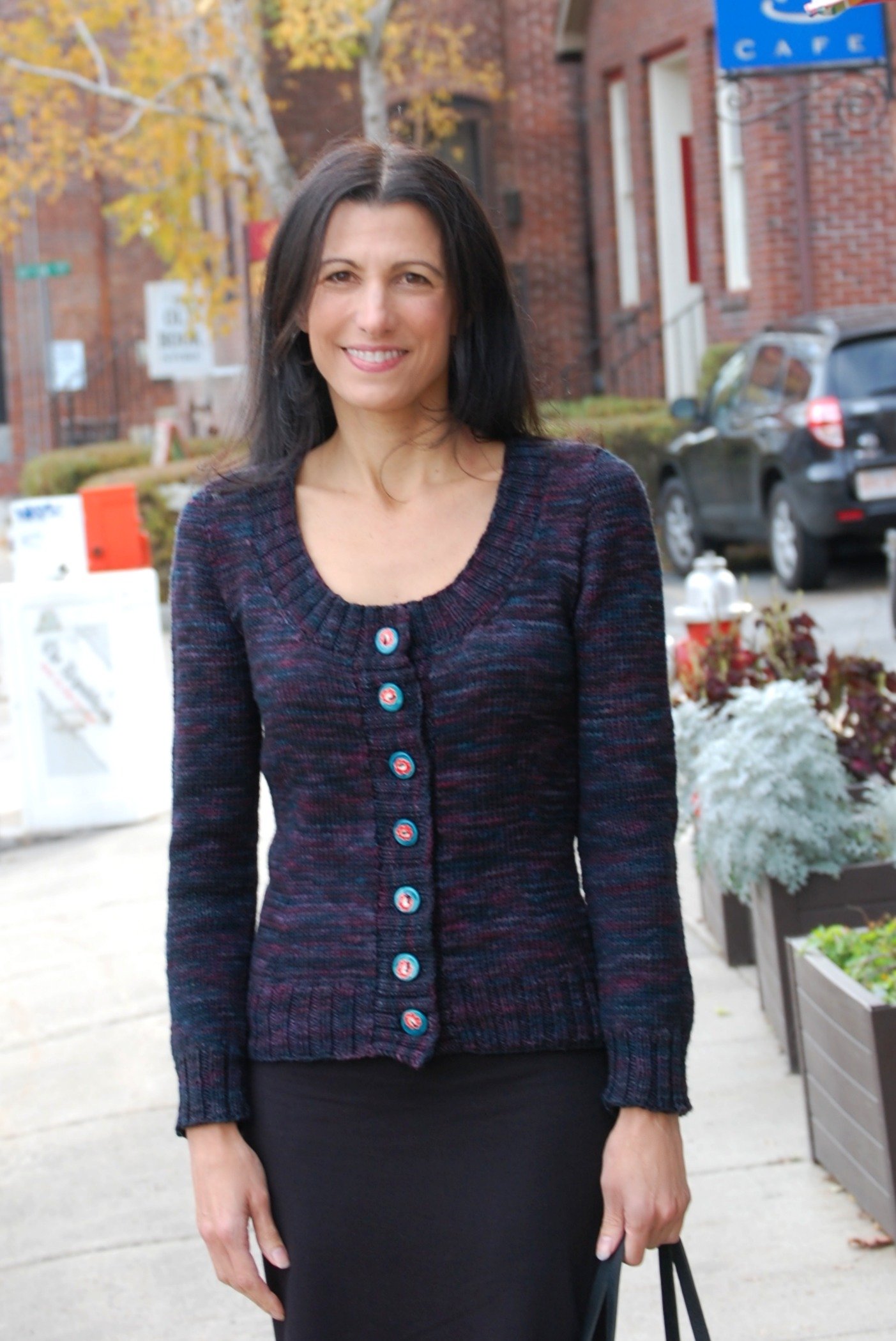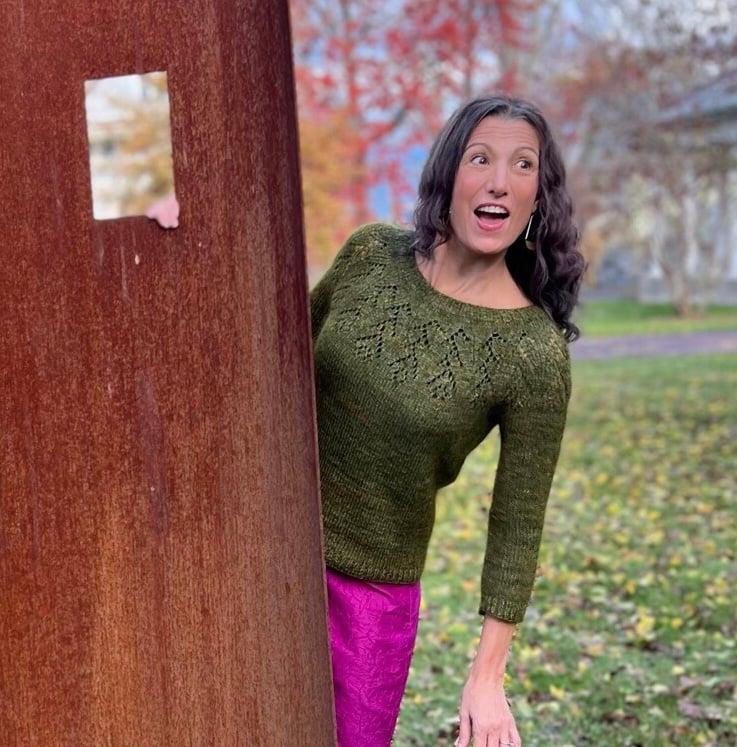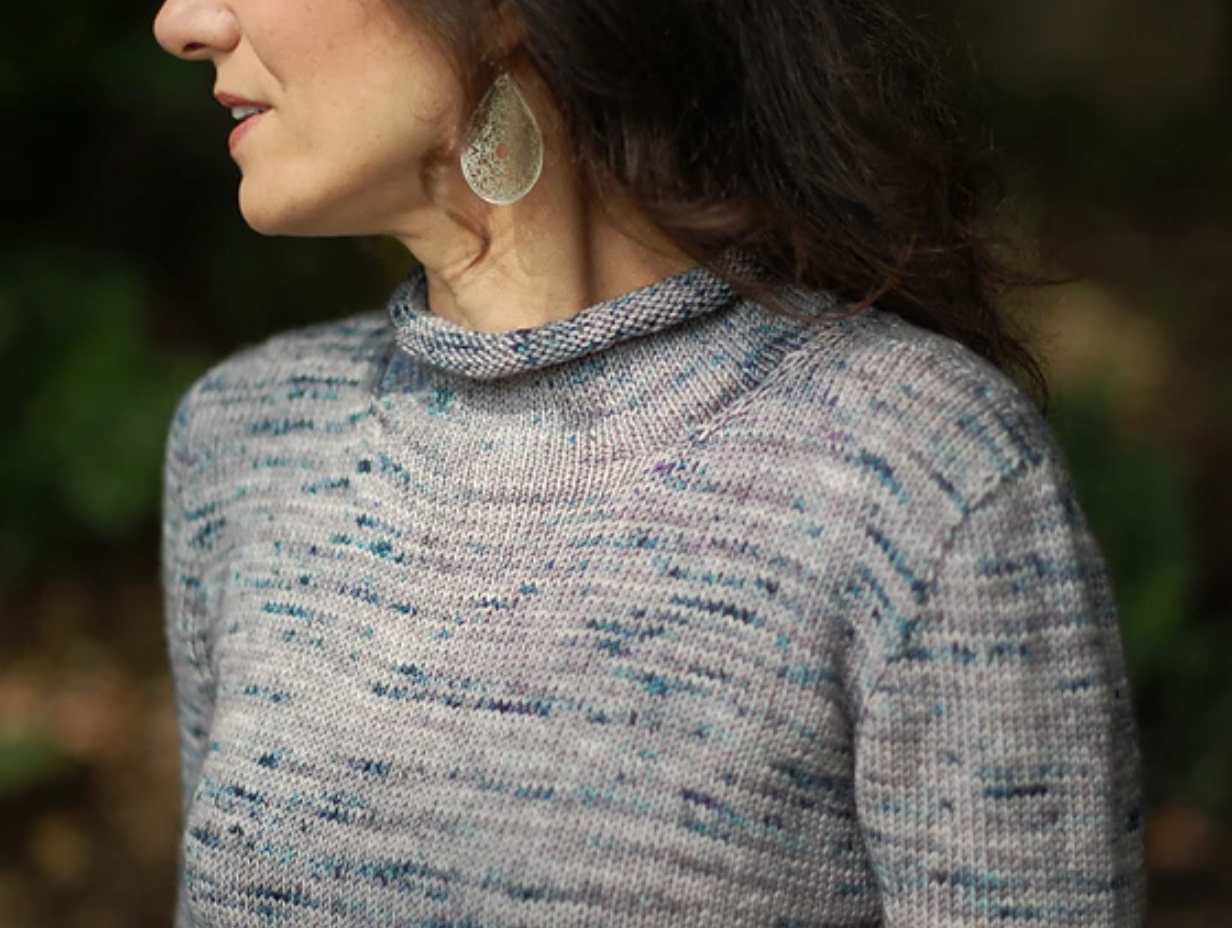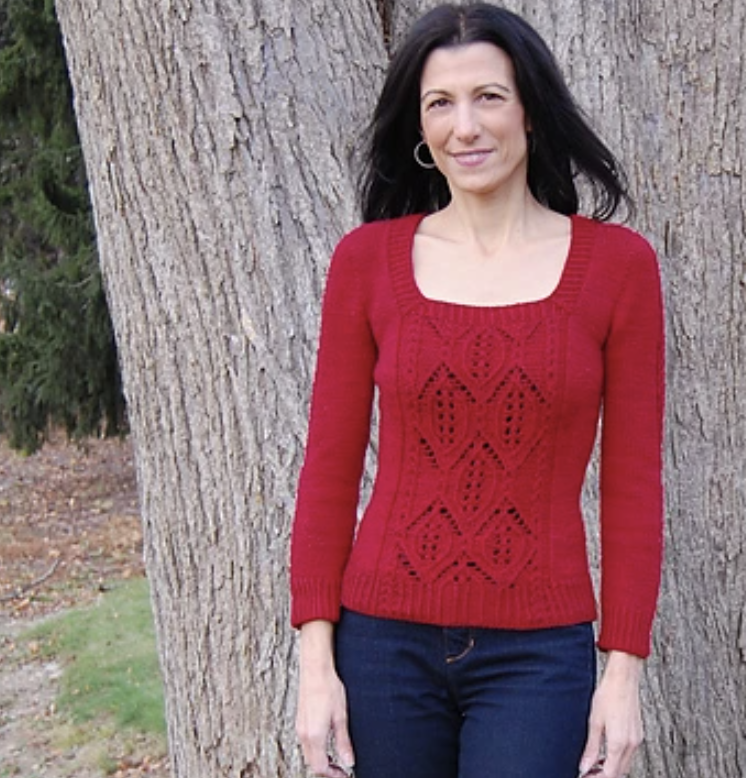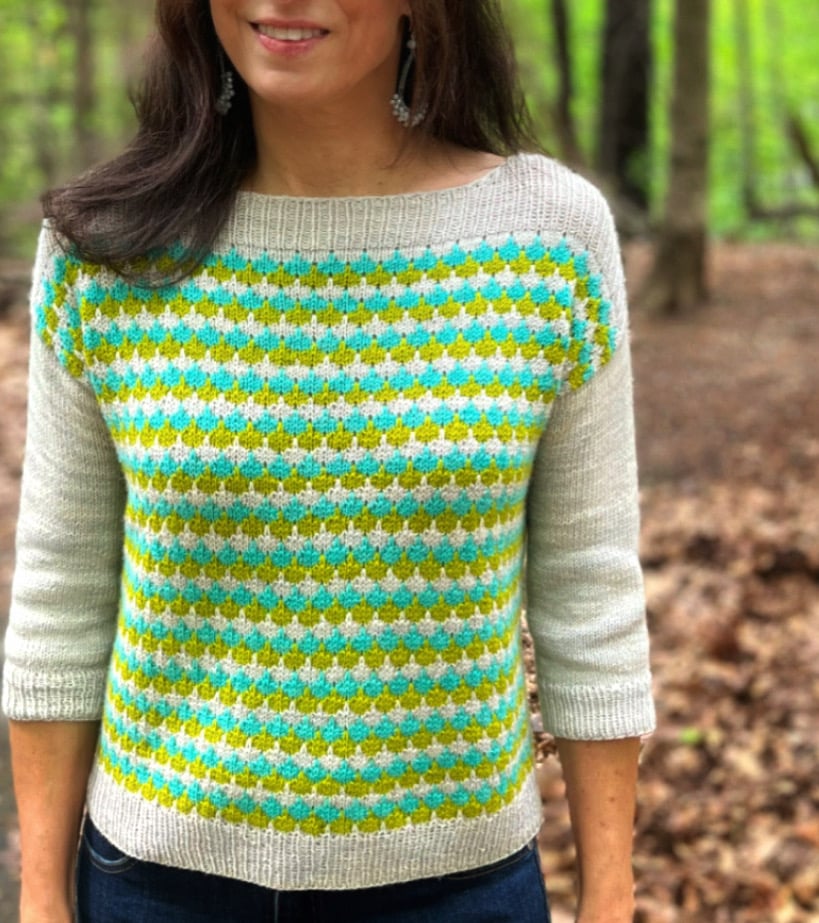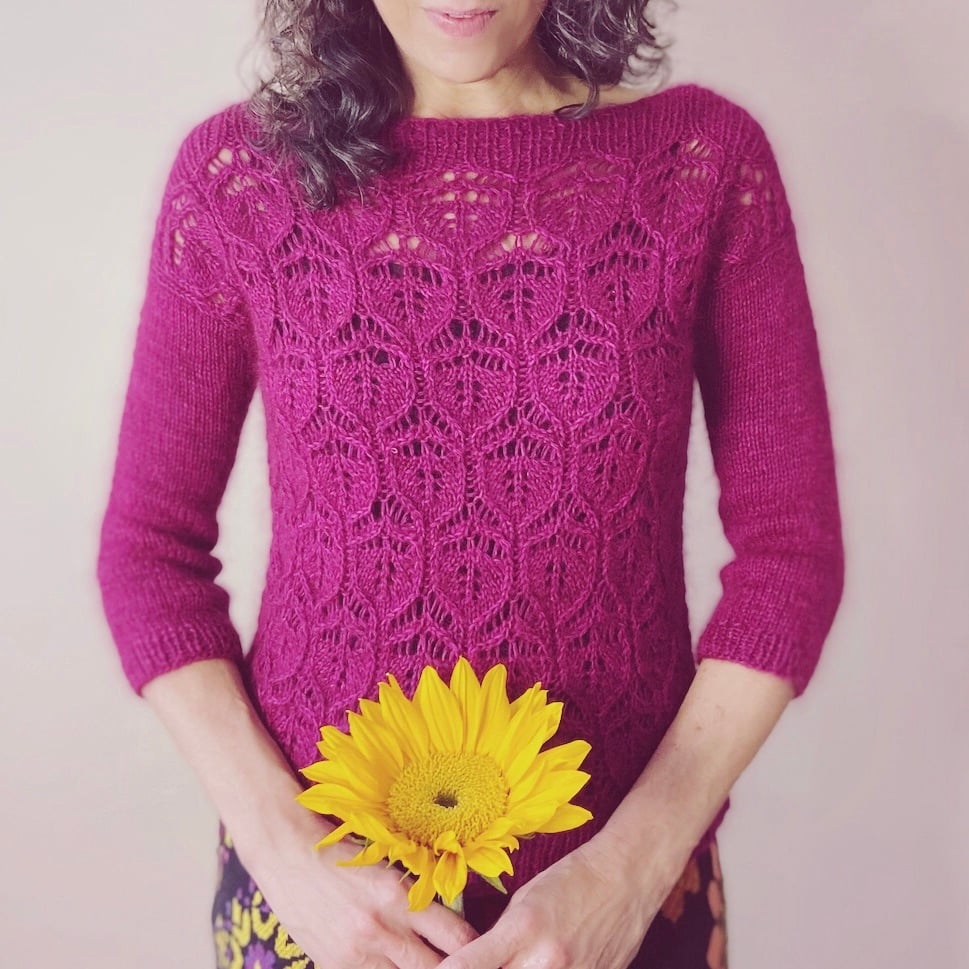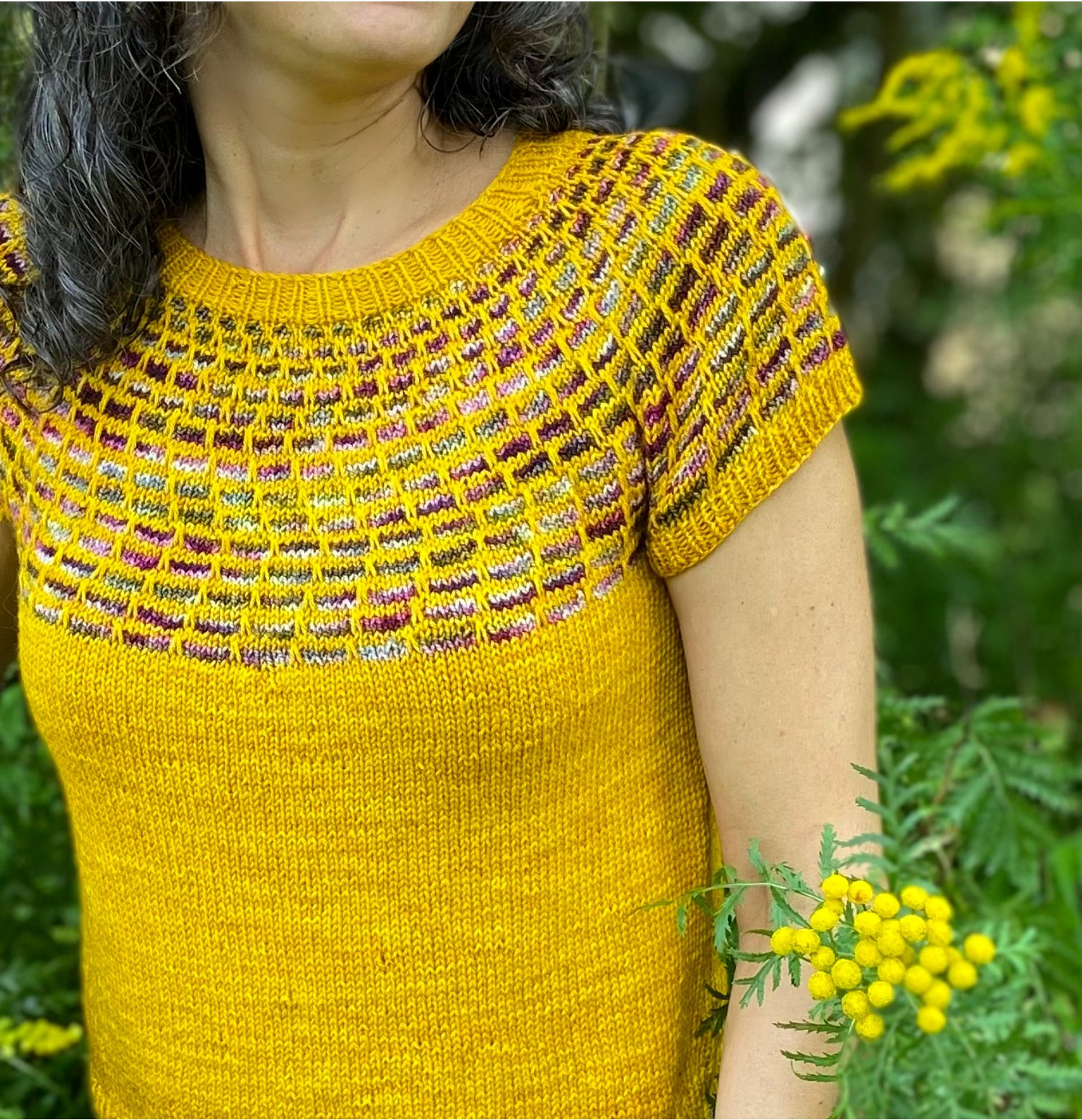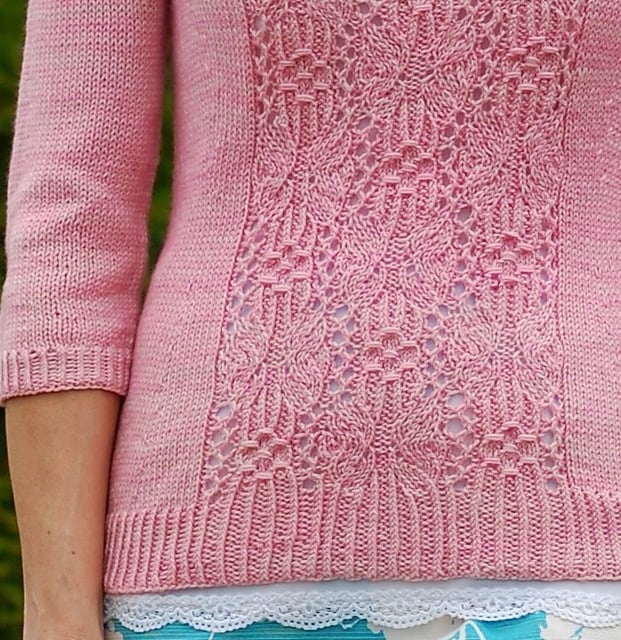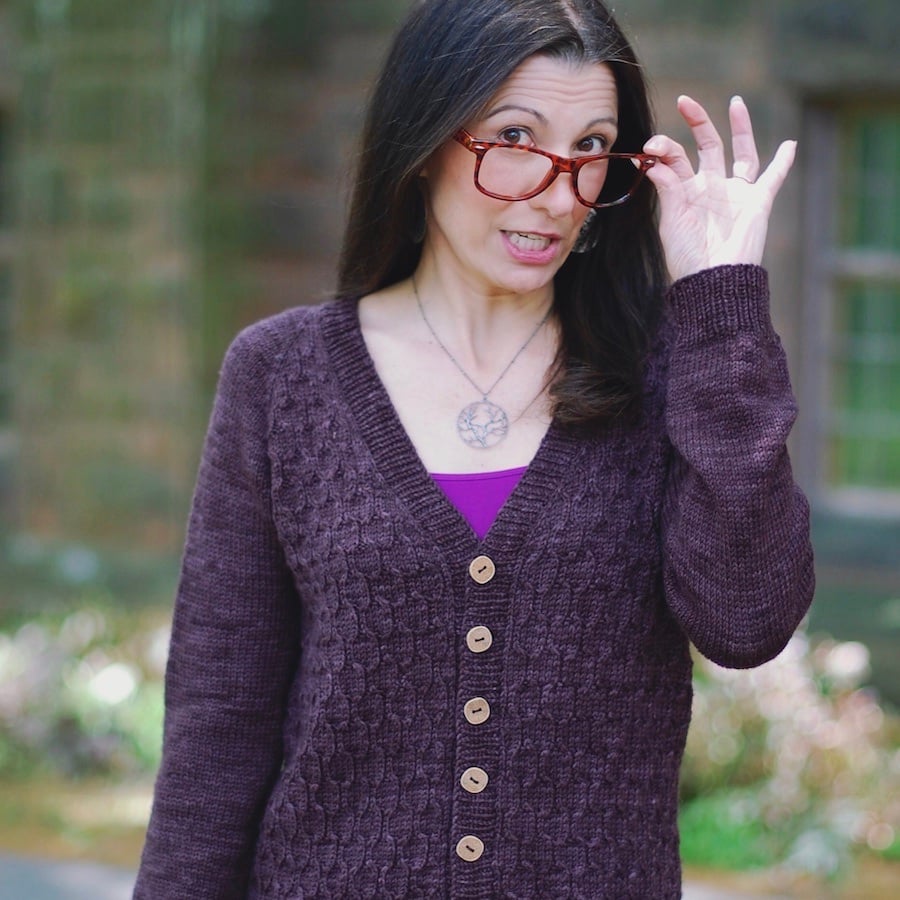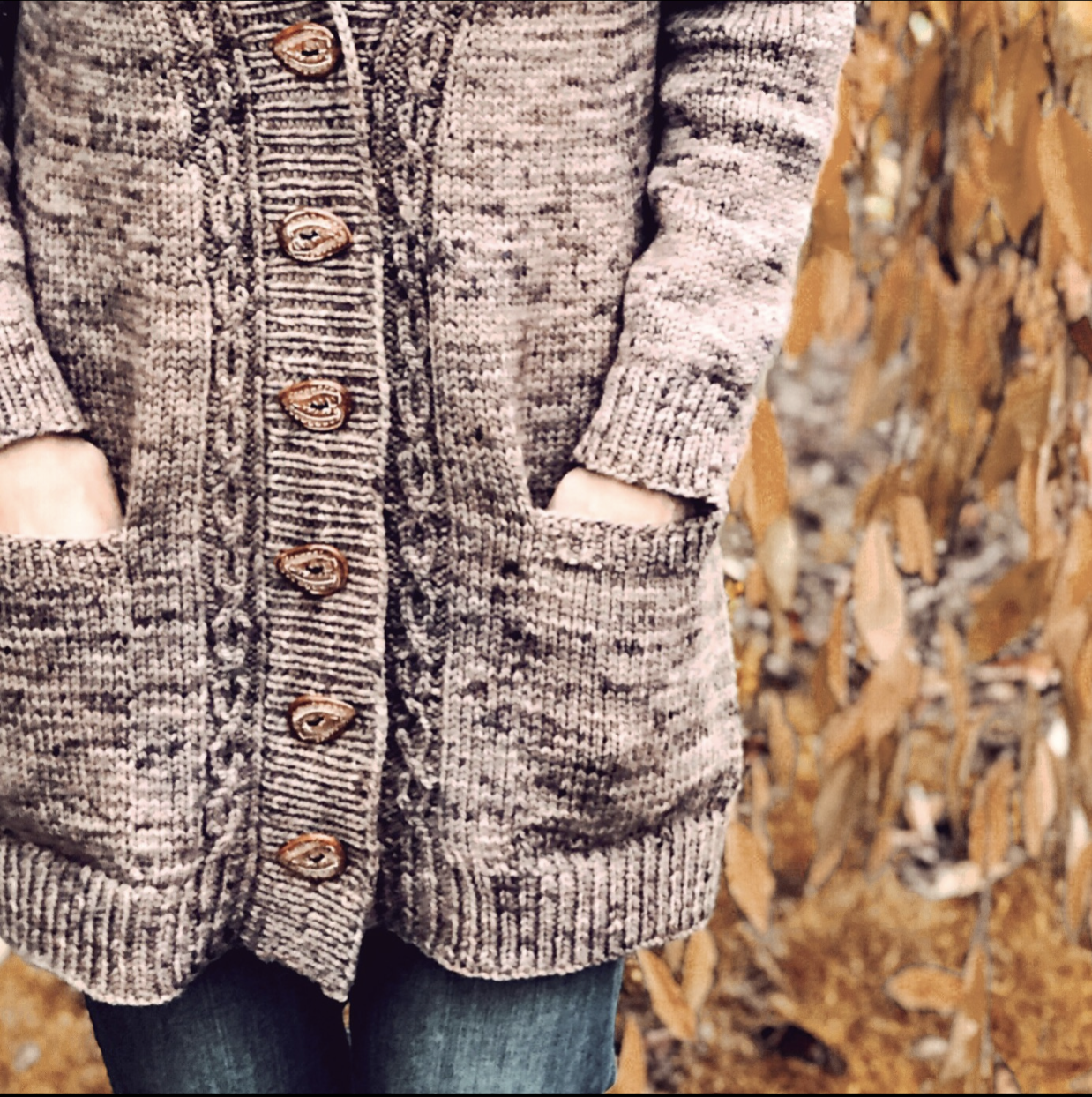Cozy McBlanket Sweater Knitting Pattern
On Sale
$8.99
$8.99
Listing is for the knitting pattern (instructions) only.
A blanket with sleeves. As Cozy as life gets.
Knit from side to side, you’ll create two openings for sleeves and use short rows to shape the “blanket” part to help it curve around the front and around the back of your neck.
Sleeves are worked by picking up stitches from the armholes and using short rows to shape the sleeve caps. Sizing is very flexible—read through the “Choosing a Size” below (pasted from the pattern) to decide which size you prefer and how the sizing works.
The yarn is sportweight that is worked to a gauge that is more typical of DK. Please note that row gauge will be important to keep an eye on--you can still modify this by adjusting for your row gauge, but keep in mind that you need to know what your **blocked** row gauge is.
Choosing a Size:
Please refer to the photo with the schematic as well as the table listing measurements and yardage requirements (the last 2 photos on the left)
Cozy McBlanket is basically that—a cozy blanket! It’s worked from side-to-side, has a couple of holes for adding sleeves, and uses short rows along the upper edge to help the blanket curve around your shoulders and neck. But otherwise, it’s a rectangle with sleeves and not quite a cardigan. The fit is generous, flexible, and will vary according to how exactly you want to wear it.
The first place to begin is with your Back Shoulder Width measurement. Before we talk about what this is, let’s first make sure what this measurement is NOT. It is NOT your crossback measurement (i.e. the distance between the sleeve seams on the back of a set-in sleeve sweater). Instead, this measurement is taken higher up on the back—over the ridge of the shoulder to the shoulder joints.
You determine this by measuring the horizontal distance across your back from the top of one shoulder joint to the other shoulder joint. Don’t include any of your actual arm in the measurement. For this reason, it’s best to take this measurement with your arms are down at your sides, but you can definitely give it a go yourself.
Once you figure out this measurement, take a look at the schematic measurements for the armhole-to-armhole distance, and choose the size that is the next size larger than your measurement. Why? Because you want the sweater to be a little looser there than your body or you’re going to end up tugging at it.
For example, my Back Shoulder Width measurement is just under 14”. When I look at the armhole-to-armhole measurements on Cozy McBlanket, I see that sizes 1B and 2A are both 14 1/4” there—I went with size 2A. FYI, my “crossback” is 13”….so if I used my crossback measurement to pick a size, I might have gone with size 1A, and that would have definitely been too tight on me.
When in doubt, go up an armhole-to-armhole (I really need to insert a cheeky joke here…) size.
I’ve sized things so that larger sizes have a little longer armhole-to-armhole distance as well as bigger armholes, and therefore sleeve bicep measurement. But it’s a good idea to check the sleeve circumference to make sure that it’s a little bigger than your actual upper arm (or else the sleeves might be too snug). To modify the sleeve size, you can actually bind off a few more sts on the armhole rows.
The other major consideration in choosing a size option has to do with the full length of the blanket part. By this, I mean the length from your cast on to bind off. This is worked side-to-side, and so your row gauge is more important to make sure that it’s long enough to wrap around you.
Notice that I’ve grouped the sizes into 4 sets: 1A & B; 2A, B, & C, 3A, B, & C; and 4A, B, & C. #sizeinclusive
Group 1 sizes are the shortest blankets because they have smaller busts to wrap around. Then group 2 is a little longer, group 3 longer than that with group 4 having the most length. This is because a larger bust size takes more length to wrap around the full bust and maximize the coziness. See the schematic for all of the lengths.
However. There is a funny thing that happens here. When you stand up while wearing your Cozy McBlanket, to say…get a cup of tea, you might let (will probably let) the blanket part drop open and hang down along your front and sides. Unless you’re quite tall, any of the sizes in groups 3 or 4 might end up hitting the floor. Yikes! What to do? You don’t want to trip on your handknitting, right?
Well, it turns out that just because someone has a bigger bust, it doesn’t mean that they’re taller, too. So I did a little (a lot) of engineering and sized groups 3 and 4 to taper the first and last color stripes. This takes away some of the vertical drop that happens when you wear it open.
Just how much wrapping you want is up to you. Do you want to wear this open all the time? If so, you’ll want a shorter blanket if you’re between sizes. Want it longer and to pin it shut? Go with the longer version if you’re waffling between sizes.
At some point with the lengths, there is a point of diminishing returns. The longer it gets, the more tapering is required to keep the ends from hitting the floor—but this also means that the largest sizes might not be able to wrap the blanket over the bust as fully as some of the smaller bust sizes. A person with a 60” bust will still be able to fold the blanket over their bust, but the fronts won’t overlap each other quite as much as someone with a 54” bust wearing size 4A. You’ll still get to enjoy the coziness, just in a different way.
Clear as mud? There’s slushiness in the sizing, and if you’d like some more general guidelines, I recommend the following
· Sizes 1A and 1B work for full bust measurements up to ~32”,
· Sizes 2A, 2B, and 2C work for full bust measurements from ~32-40”,
· Sizes 3A, 3B, and 3C work for full bust measurements from ~40-45”, and
· Sizes 4A, 4B, and 4C work for full bust measurements from ~45-52” busts fully overlapped over the bust, and up to size 60” busts worn without fully overlapping the fronts.
**Yarn requirements are listed in table form** in the last photo on the left of this pattern listing.
A blanket with sleeves. As Cozy as life gets.
Knit from side to side, you’ll create two openings for sleeves and use short rows to shape the “blanket” part to help it curve around the front and around the back of your neck.
Sleeves are worked by picking up stitches from the armholes and using short rows to shape the sleeve caps. Sizing is very flexible—read through the “Choosing a Size” below (pasted from the pattern) to decide which size you prefer and how the sizing works.
The yarn is sportweight that is worked to a gauge that is more typical of DK. Please note that row gauge will be important to keep an eye on--you can still modify this by adjusting for your row gauge, but keep in mind that you need to know what your **blocked** row gauge is.
Choosing a Size:
Please refer to the photo with the schematic as well as the table listing measurements and yardage requirements (the last 2 photos on the left)
Cozy McBlanket is basically that—a cozy blanket! It’s worked from side-to-side, has a couple of holes for adding sleeves, and uses short rows along the upper edge to help the blanket curve around your shoulders and neck. But otherwise, it’s a rectangle with sleeves and not quite a cardigan. The fit is generous, flexible, and will vary according to how exactly you want to wear it.
The first place to begin is with your Back Shoulder Width measurement. Before we talk about what this is, let’s first make sure what this measurement is NOT. It is NOT your crossback measurement (i.e. the distance between the sleeve seams on the back of a set-in sleeve sweater). Instead, this measurement is taken higher up on the back—over the ridge of the shoulder to the shoulder joints.
You determine this by measuring the horizontal distance across your back from the top of one shoulder joint to the other shoulder joint. Don’t include any of your actual arm in the measurement. For this reason, it’s best to take this measurement with your arms are down at your sides, but you can definitely give it a go yourself.
Once you figure out this measurement, take a look at the schematic measurements for the armhole-to-armhole distance, and choose the size that is the next size larger than your measurement. Why? Because you want the sweater to be a little looser there than your body or you’re going to end up tugging at it.
For example, my Back Shoulder Width measurement is just under 14”. When I look at the armhole-to-armhole measurements on Cozy McBlanket, I see that sizes 1B and 2A are both 14 1/4” there—I went with size 2A. FYI, my “crossback” is 13”….so if I used my crossback measurement to pick a size, I might have gone with size 1A, and that would have definitely been too tight on me.
When in doubt, go up an armhole-to-armhole (I really need to insert a cheeky joke here…) size.
I’ve sized things so that larger sizes have a little longer armhole-to-armhole distance as well as bigger armholes, and therefore sleeve bicep measurement. But it’s a good idea to check the sleeve circumference to make sure that it’s a little bigger than your actual upper arm (or else the sleeves might be too snug). To modify the sleeve size, you can actually bind off a few more sts on the armhole rows.
The other major consideration in choosing a size option has to do with the full length of the blanket part. By this, I mean the length from your cast on to bind off. This is worked side-to-side, and so your row gauge is more important to make sure that it’s long enough to wrap around you.
Notice that I’ve grouped the sizes into 4 sets: 1A & B; 2A, B, & C, 3A, B, & C; and 4A, B, & C. #sizeinclusive
Group 1 sizes are the shortest blankets because they have smaller busts to wrap around. Then group 2 is a little longer, group 3 longer than that with group 4 having the most length. This is because a larger bust size takes more length to wrap around the full bust and maximize the coziness. See the schematic for all of the lengths.
However. There is a funny thing that happens here. When you stand up while wearing your Cozy McBlanket, to say…get a cup of tea, you might let (will probably let) the blanket part drop open and hang down along your front and sides. Unless you’re quite tall, any of the sizes in groups 3 or 4 might end up hitting the floor. Yikes! What to do? You don’t want to trip on your handknitting, right?
Well, it turns out that just because someone has a bigger bust, it doesn’t mean that they’re taller, too. So I did a little (a lot) of engineering and sized groups 3 and 4 to taper the first and last color stripes. This takes away some of the vertical drop that happens when you wear it open.
Just how much wrapping you want is up to you. Do you want to wear this open all the time? If so, you’ll want a shorter blanket if you’re between sizes. Want it longer and to pin it shut? Go with the longer version if you’re waffling between sizes.
At some point with the lengths, there is a point of diminishing returns. The longer it gets, the more tapering is required to keep the ends from hitting the floor—but this also means that the largest sizes might not be able to wrap the blanket over the bust as fully as some of the smaller bust sizes. A person with a 60” bust will still be able to fold the blanket over their bust, but the fronts won’t overlap each other quite as much as someone with a 54” bust wearing size 4A. You’ll still get to enjoy the coziness, just in a different way.
Clear as mud? There’s slushiness in the sizing, and if you’d like some more general guidelines, I recommend the following
· Sizes 1A and 1B work for full bust measurements up to ~32”,
· Sizes 2A, 2B, and 2C work for full bust measurements from ~32-40”,
· Sizes 3A, 3B, and 3C work for full bust measurements from ~40-45”, and
· Sizes 4A, 4B, and 4C work for full bust measurements from ~45-52” busts fully overlapped over the bust, and up to size 60” busts worn without fully overlapping the fronts.
**Yarn requirements are listed in table form** in the last photo on the left of this pattern listing.
